Using High-Resolution Ultrasound to Assess Post-Facial Paralysis Synkinesis—Machine Settings and Technical Aspects for Facial Surgeons
Abstract
1. Introduction
2. Materials and Methods
2.1. High-Resolution Brightness (B)-Mode Examination
2.2. Practical Methodology and Identification of Fundamental Knobology
2.3. Standardized Workflow Protocol
3. Results
3.1. Technical Requirements
3.2. Practical Methodology
3.3. Transducer Selection, Preset Programs, and Device Properties
3.4. Practical Sequence, Structured Approach, and Standardized Workflow Protocol
3.5. Specific Device Settings
3.6. Cross-Sectional Diameter of Facial Muscles
3.7. Practical Sequence and Structured Approach
- Start with using the B-Mode settings and identify the different tissue layers, such as the skin, subcutaneous, fascia (SMAS), and muscle tissue.
- Apply the freeze function and measure the diameter of the facial muscles at their midpoint. Do not forget to store the pictures before unfreezing.
- For a dynamic examination, ask the patient to repetitively perform a broad smile and save the cine loops.
4. Discussion
Limitations
5. Conclusions
Supplementary Materials
Author Contributions
Funding
Institutional Review Board Statement
Informed Consent Statement
Data Availability Statement
Conflicts of Interest
References
- Zhang, W.; Xu, L.; Luo, T.; Wu, F.; Zhao, B.; Li, X. The etiology of Bell’s palsy: A review. J. Neurol. 2020, 267, 1896–1905. [Google Scholar] [CrossRef] [PubMed]
- Lassaletta, L.; Morales-Puebla, J.M.; Altuna, X.; Arbizu, Á.; Arístegui, M.; Batuecas, Á.; Cenjor, C.; Espinosa-Sánchez, J.M.; García-Iza, L.; García-Raya, P.; et al. Facial paralysis: Clinical practice guideline of the Spanish Society of Otolaryngology. Acta Otorrinolaringol. (Engl. Ed.) 2020, 71, 99–118. [Google Scholar] [CrossRef]
- Shokri, T.; Azizzadeh, B.; Ducic, Y. Modern Management of Facial Nerve Disorders. Semin. Plast. Surg. 2020, 34, 277–285. [Google Scholar] [CrossRef] [PubMed]
- Heckmann, J.G.; Urban, P.P.; Pitz, S.; Guntinas-Lichius, O. The Diagnosis and Treatment of Idiopathic Facial Paresis (Bell’s Palsy). Dtsch. Arztebl. Int. 2019, 116, 692–702. [Google Scholar] [CrossRef]
- Bylund, N.; Jensson, D.; Enghag, S.; Berg, T.; Marsk, E.; Hultcrantz, M.; Hadziosmanovic, N.; Rodriguez-Lorenzo, A.; Jonsson, L. Synkinesis in Bell’s palsy in a randomised controlled trial. Clin. Otolaryngol. 2017, 42, 673–680. [Google Scholar] [CrossRef]
- Park, J.M.; Kim, M.G.; Jung, J.; Kim, S.S.; Jung, A.R.; Kim, S.H.; Yeo, S.G. Effect of Age and Severity of Facial Palsy on Taste Thresholds in Bell’s Palsy Patients. J. Audiol. Otol. 2017, 21, 16–21. [Google Scholar] [CrossRef]
- Miller, M.Q.; Hadlock, T.A. Beyond Botox: Contemporary Management of Nonflaccid Facial Palsy. Facial Plast. Surg. Aesthet. Med. 2020, 22, 65–70. [Google Scholar] [CrossRef]
- Parsa, K.M.; Hancock, M.; Nguy, P.L.; Donalek, H.M.; Wang, H.; Barth, J.; Reilly, M.J. Association of Facial Paralysis with Perceptions of Personality and Physical Traits. JAMA Netw. Open 2020, 3, e205495. [Google Scholar] [CrossRef]
- Li, M.K.; Niles, N.; Gore, S.; Ebrahimi, A.; McGuinness, J.; Clark, J.R. Social perception of morbidity in facial nerve paralysis. Head Neck 2016, 38, 1158–1163. [Google Scholar] [CrossRef]
- Fujiwara, K.; Furuta, Y.; Aoki, W.; Nakamaru, Y.; Morita, S.; Hoshino, K.; Fukuda, A.; Homma, A. Make-Up Therapy for Patients with Facial Nerve Palsy. Ann. Otol. Rhinol. Laryngol. 2019, 128, 721–727. [Google Scholar] [CrossRef]
- Schumann, N.P.; Bongers, K.; Scholle, H.C.; Guntinas-Lichius, O. Atlas of voluntary facial muscle activation: Visualization of surface electromyographic activities of facial muscles during mimic exercises. PLoS ONE 2021, 16, e0254932. [Google Scholar] [CrossRef] [PubMed]
- Freilinger, G.; Gruber, H.; Happak, W.; Pechmann, U. Surgical anatomy of the mimic muscle system and the facial nerve: Importance for reconstructive and aesthetic surgery. Plast. Reconstr. Surg. 1987, 80, 686–690. [Google Scholar] [CrossRef] [PubMed]
- Diogo, R.; Wood, B.A.; Aziz, M.A.; Burrows, A. On the origin, homologies and evolution of primate facial muscles, with a particular focus on hominoids and a suggested unifying nomenclature for the facial muscles of the Mammalia. J. Anat. 2009, 215, 300–319. [Google Scholar] [CrossRef] [PubMed]
- Wenceslau, L.G.; Sassi, F.C.; Magnani, D.M.; Andrade, C.R. Peripheral facial palsy: Muscle activity in different onset times. Codas 2016, 28, 3–9. [Google Scholar] [CrossRef] [PubMed]
- Volk, G.F.; Pohlmann, M.; Sauer, M.; Finkensieper, M.; Guntinas-Lichius, O. Quantitative ultrasonography of facial muscles in patients with chronic facial palsy. Muscle Nerve 2014, 50, 358–365. [Google Scholar] [CrossRef]
- Baba, S.; Kondo, K.; Yamasoba, T. Electrophysiological Evaluation of the Facial Muscles in Congenital Unilateral Lower Lip Palsy. Otol. Neurotol. 2018, 39, 106–110. [Google Scholar] [CrossRef]
- Sauer, M.; Guntinas-Lichius, O.; Volk, G.F. Ultrasound echomyography of facial muscles in diagnosis and follow-up of facial palsy in children. Eur. J. Paediatr. Neurol. 2016, 20, 666–670. [Google Scholar] [CrossRef]
- Mandlik, V.; Ruewe, M.; Engelmann, S.; Geis, S.; Taeger, C.; Kehrer, M.; Tamm, E.R.; Bleys, R.; Prantl, L.; Kehrer, A. Significance of the Marginal Mandibular Branch in Relation to Facial Palsy Reconstruction: Assessment of Microanatomy and Macroanatomy Including Axonal Load in 96 Facial Halves. Ann. Plast. Surg. 2019, 83, e43–e49. [Google Scholar] [CrossRef]
- Ruewe, M.; Engelmann, S.; Huang, C.W.; Klein, S.M.; Anker, A.M.; Lamby, P.; Bleys, R.; Tamm, E.R.; Prantl, L.; Kehrer, A. Microanatomy of the Frontal Branch of the Facial Nerve: The Role of Nerve Caliber and Axonal Capacity. Plast. Reconstr. Surg. 2021, 148, 1357–1365. [Google Scholar] [CrossRef]
- Cotofana, S.; Freytag, D.L.; Frank, K.; Sattler, S.; Landau, M.; Pavicic, T.; Fabi, S.; Lachman, N.; Hernandez, C.A.; Green, J.B. The Bidirectional Movement of the Frontalis Muscle: Introducing the Line of Convergence and Its Potential Clinical Relevance. Plast. Reconstr. Surg. 2020, 145, 1155–1162. [Google Scholar] [CrossRef]
- De Bonnecaze, G.; Vergez, S.; Chaput, B.; Vairel, B.; Serrano, E.; Chantalat, E.; Chaynes, P. Variability in facial-muscle innervation: A comparative study based on electrostimulation and anatomical dissection. Clin. Anat. 2019, 32, 169–175. [Google Scholar] [CrossRef]
- Uygur, S.; Konofaos, P. Topographic and Neural Anatomy of the Depressor Anguli Oris Muscle and Implications for Treatment of Synkinetic Facial Paralysis. Plast. Reconstr. Surg. 2022, 149, 146e–147e. [Google Scholar] [CrossRef] [PubMed]
- Krag, A.E.; Dumestre, D.; Hembd, A.; Glick, S.; Mohanty, A.J.; Rozen, S.M. Topographic and Neural Anatomy of the Depressor Anguli Oris Muscle and Implications for Treatment of Synkinetic Facial Paralysis. Plast. Reconstr. Surg. 2021, 147, 268e–278e. [Google Scholar] [CrossRef] [PubMed]
- Hur, M.S.; Hu, K.S.; Cho, J.Y.; Kwak, H.H.; Song, W.C.; Koh, K.S.; Lorente, M.; Kim, H.J. Topography and location of the depressor anguli oris muscle with a reference to the mental foramen. Surg. Radiol. Anat. 2008, 30, 403–407. [Google Scholar] [CrossRef] [PubMed]
- Marcuzzo, A.V.; Šuran-Brunelli, A.N.; Dal Cin, E.; Rigo, S.; Piccinato, A.; Boscolo Nata, F.; Tofanelli, M.; Boscolo-Rizzo, P.; Grill, V.; Di Lenarda, R.; et al. Surgical Anatomy of the Marginal Mandibular Nerve: A Systematic Review and Meta-Analysis. Clin. Anat. 2020, 33, 739–750. [Google Scholar] [CrossRef]
- Engelmann, S.; Ruewe, M.; Geis, S.; Taeger, C.D.; Kehrer, M.; Tamm, E.R.; Bleys, R.L.A.W.; Zeman, F.; Prantl, L.; Kehrer, A. Rapid and Precise Semi-Automatic Axon Quantification in Human Peripheral Nerves. Sci. Rep. 2020, 10, 1935. [Google Scholar] [CrossRef] [PubMed]
- Jowett, N.; Malka, R.; Hadlock, T.A. Effect of Weakening of Ipsilateral Depressor Anguli Oris on Smile Symmetry in Postparalysis Facial Palsy. JAMA Facial Plast. Surg. 2017, 19, 29–33. [Google Scholar] [CrossRef]
- Pessa, J.E.; Zadoo, V.P.; Garza, P.A.; Adrian, E.K., Jr.; Dewitt, A.I.; Garza, J.R. Double or bifid zygomaticus major muscle: Anatomy, incidence, and clinical correlation. Clin. Anat. 1998, 11, 310–313. [Google Scholar] [CrossRef]
- Kehrer, A.; Engelmann, S.; Bauer, R.; Taeger, C.; Grechenig, S.; Kehrer, M.; Prantl, L.; Tamm, E.; Bleys, R.; Mandlik, V. The nerve supply of zygomaticus major: Variability and distinguishing zygomatic from buccal facial nerve branches. Clin. Anat. 2018, 31, 560–565. [Google Scholar] [CrossRef]
- Miller, P.J.; Smith, S.; Shah, A. The subzygomatic fossa: A practical landmark in identifying the zygomaticus major muscle. Arch. Facial Plast. Surg. 2007, 9, 271–274. [Google Scholar] [CrossRef][Green Version]
- Wong, C.H.; Mendelson, B. Facial soft-tissue spaces and retaining ligaments of the midcheek: Defining the premaxillary space. Plast. Reconstr. Surg. 2013, 132, 49–56. [Google Scholar] [CrossRef] [PubMed]
- Shim, K.S.; Hu, K.S.; Kwak, H.H.; Youn, K.H.; Koh, K.S.; Fontaine, C.; Kim, H.J. An anatomical study of the insertion of the zygomaticus major muscle in humans focused on the muscle arrangement at the corner of the mouth. Plast. Reconstr. Surg. 2008, 121, 466–473. [Google Scholar] [CrossRef] [PubMed]
- Phan, K.; Onggo, J. Prevalence of Bifid Zygomaticus Major Muscle. J. Craniofac. Surg. 2019, 30, 758–760. [Google Scholar] [CrossRef] [PubMed]
- Kwak, H.H.; Hu, K.S.; Youn, K.H.; Jin, G.C.; Shim, K.S.; Fontaine, C.; Kim, H.J. Topographic relationship between the muscle bands of the zygomaticus major muscle and the facial artery. Surg. Radiol. Anat. 2006, 28, 477–480. [Google Scholar] [CrossRef] [PubMed]
- Liu, M.T.; Iglesias, R.A.; Sekhon, S.S.; Li, Y.; Larson, K.; Totonchi, A.; Guyuron, B. Factors contributing to facial asymmetry in identical twins. Plast. Reconstr. Surg. 2014, 134, 638–646. [Google Scholar] [CrossRef]
- Lee, H.J.; Kim, J.S.; Youn, K.H.; Lee, J.; Kim, H.J. Ultrasound-Guided Botulinum Neurotoxin Type A Injection for Correcting Asymmetrical Smiles. Aesthet. Surg. J. 2018, 38, NP130–NP134. [Google Scholar] [CrossRef]
- Terzis, J.K.; Kalantarian, B. Microsurgical strategies in 74 patients for restoration of dynamic depressor muscle mechanism: A neglected target in facial reanimation. Plast. Reconstr. Surg. 2000, 105, 1917–1931. [Google Scholar] [CrossRef]
- Gray, H. The muscles and fasciae. In Anatomy, Descriptive and Surgical; Pick, T.P., Howden, R., Eds.; Pennsylvania State University: State College, PA, USA, 1974; pp. 306–315. [Google Scholar]
- de Maio, M.; Rzany, B. Botulinum Toxin in Aesthetic Medicine; Springer: Berlin/Heidelberg, Germany, 2007. [Google Scholar]
- Leader, B.; Azizzadeh, B. Synkinetic Unilateral Lower Lip Palsy: Diagnosis and Technical Considerations for Facial Reanimation. Facial Plast. Surg. Aesthet. Med. 2021, 23, 309–311. [Google Scholar] [CrossRef]
- Baugh, R.F.; Basura, G.J.; Ishii, L.E.; Schwartz, S.R.; Drumheller, C.M.; Burkholder, R.; Deckard, N.A.; Dawson, C.; Driscoll, C.; Gillespie, M.B.; et al. Clinical practice guideline: Bell’s Palsy executive summary. Otolaryngol. Head Neck Surg. 2013, 149, 656–663. [Google Scholar] [CrossRef]
- de Almeida, J.R.; Guyatt, G.H.; Sud, S.; Dorion, J.; Hill, M.D.; Kolber, M.R.; Lea, J.; Reg, S.L.; Somogyi, B.K.; Westerberg, B.D.; et al. Management of Bell palsy: Clinical practice guideline. Cmaj 2014, 186, 917–922. [Google Scholar] [CrossRef]
- Li, S.; Guo, R.J.; Liang, X.N.; Wu, Y.; Cao, W.; Zhang, Z.P.; Zhao, W.; Liang, H.D. High-frequency ultrasound as an adjunct to neural electrophysiology: Evaluation and prognosis of Bell’s palsy. Exp. Ther. Med. 2016, 11, 77–82. [Google Scholar] [CrossRef] [PubMed]
- Baek, S.-H.; Kim, Y.H.; Kwon, Y.-J.; Sung, J.H.; Son, M.H.; Lee, J.H.; Kim, B.-J. The Utility of Facial Nerve Ultrasonography in Bell’s Palsy. Otolaryngol. Head Neck Surg. 2019, 162, 186–192. [Google Scholar] [CrossRef] [PubMed]
- Zhu, J.; Li, X.; Han, Y.; Cao, Y.; Guan, L.; Geng, X. High frequency ultrasonography of the facial nerve: Another effective method to observe the course of idiopathic facial nerve paralysis. Environ. Dis. 2020, 5, 100–106. [Google Scholar] [CrossRef]
- Tashiro, K.; Yamashita, S.; Araki, J.; Narushima, M.; Iida, T.; Koshima, I. Preoperative color Doppler ultrasonographic examination in the planning of thoracodorsal artery perforator flap with capillary perforators. J. Plast. Reconstr. Aesthet. Surg. 2016, 69, 346–350. [Google Scholar] [CrossRef]
- Su, W.; Lu, L.; Lazzeri, D.; Zhang, Y.X.; Wang, D.; Innocenti, M.; Qian, Y.; Agostini, T.; Levin, L.S.; Messmer, C. Contrast-enhanced ultrasound combined with three-dimensional reconstruction in preoperative perforator flap planning. Plast. Reconstr. Surg. 2013, 131, 80–93. [Google Scholar] [CrossRef]
- Wegscheider, H.; Volk, G.F.; Guntinas-Lichius, O.; Moriggl, B. High-resolution ultrasonography of the normal extratemporal facial nerve. Eur. Arch. Otorhinolaryngol. 2018, 275, 293–299. [Google Scholar] [CrossRef]
- Volk, G.F.; Wystub, N.; Pohlmann, M.; Finkensieper, M.; Chalmers, H.J.; Guntinas-Lichius, O. Quantitative ultrasonography of facial muscles. Muscle Nerve 2013, 47, 878–883. [Google Scholar] [CrossRef]
- Kehrer, A.; Sachanadani, N.S.; da Silva, N.P.B.; Lonic, D.; Heidekrueger, P.; Taeger, C.D.; Klein, S.; Jung, E.M.; Prantl, L.; Hong, J.P. Step-by-step guide to ultrasound-based design of alt flaps by the microsurgeon—Basic and advanced applications and device settings. J. Plast. Reconstr. Aesthet. Surg. 2020, 73, 1081–1090. [Google Scholar] [CrossRef]
- Kehrer, A.; Lonic, D.; Heidekrueger, P.; Bosselmann, T.; Taeger, C.D.; Lamby, P.; Kehrer, M.; Jung, E.M.; Prantl, L.; Platz Batista da Silva, N. Feasibility study of preoperative microvessel evaluation and characterization in perforator flaps using various modes of color-coded duplex sonography (CCDS). Microsurgery 2020, 40, 750–759. [Google Scholar] [CrossRef]
- Ross, B.R.; Fradet, G.; Nedzelski, J.M. Development of a sensitive clinical facial grading system. Eur. Arch. Otorhinolaryngol. 1996, 114, 380–386. [Google Scholar] [CrossRef]
- Stasi, G.; Ruoti, E. A critical evaluation in the delivery of the ultrasound practice: The point of view of the radiologist. Ital. J. Med. 2015, 9. [Google Scholar] [CrossRef]
- Rix, A.; Lederle, W.; Theek, B.; Lammers, T.; Moonen, C.; Schmitz, G.; Kiessling, F. Advanced Ultrasound Technologies for Diagnosis and Therapy. J. Nucl. Med. 2018, 59, 740–746. [Google Scholar] [CrossRef] [PubMed]
- Fuzi, J.; Taylor, A.; Sideris, A.; Meller, C. Does Botulinum Toxin Therapy Improve Quality of Life in Patients with Facial Palsy? Aesthet. Plast. Surg. 2020, 44, 1811–1819. [Google Scholar] [CrossRef] [PubMed]
- Lentz, B.; Fong, T.; Rhyne, R.; Risko, N. A systematic review of the cost-effectiveness of ultrasound in emergency care settings. Ultrasound. J. 2021, 13, 16. [Google Scholar] [CrossRef]
- Kehrer, A.; Mandlik, V.; Taeger, C.; Geis, S.; Prantl, L.; Jung, E.M. Postoperative control of functional muscle flaps for facial palsy reconstruction: Ultrasound guided tissue monitoring using contrast enhanced ultrasound (CEUS) and ultrasound elastography. Clin. Hemorheol. Microcirc. 2017, 67, 435–444. [Google Scholar] [CrossRef]
- Kehrer, A.; Heidekrueger, P.I.; Lonic, D.; Taeger, C.D.; Klein, S.; Lamby, P.; Sachanadani, N.S.; Jung, E.M.; Prantl, L.; Batista da Silva, N.P. High-Resolution Ultrasound-Guided Perforator Mapping and Characterization by the Microsurgeon in Lower Limb Reconstruction. J. Reconstr. Microsurg. 2021, 37, 75–82. [Google Scholar] [CrossRef]
- Bassilios Habre, S.; Googe, B.J.; Depew, J.B.; Wallace, R.D.; Konofaos, P. Depressor Reanimation After Facial Nerve Paralysis. Ann. Plast. Surg. 2019, 82, 582–590. [Google Scholar] [CrossRef]
- Klebuc, M.J.A. Facial reanimation using the masseter-to-facial nerve transfer. Plast. Reconstr. Surg. 2011, 127, 1909–1915. [Google Scholar] [CrossRef]
- Patel, P.N.; Owen, S.R.; Norton, C.P.; Emerson, B.T.; Bronaugh, A.B.; Ries, W.R.; Stephan, S.J. Outcomes of Buccinator Treatment With Botulinum Toxin in Facial Synkinesis. JAMA Facial Plast. Surg. 2018, 20, 196–201. [Google Scholar] [CrossRef]
- Halani, S.H.; Sanchez, C.V.; Hembd, A.S.; Mohanty, A.J.; Reisch, J.; Rozen, S.M. Depressor Anguli Oris Myectomy versus Transfer to Depressor Labii Inferioris for Facial Symmetry in Synkinetic Facial Paralysis. J. Reconstr. Microsurg. 2022, 38, 328–334. [Google Scholar] [CrossRef]
- Rozen, S.; Redett, R.J.; Zuker, R.M.; Snyder-Warwick, A.K. ASPN/ASRM Combined Panel I: Difficult Cases of Facial Paralysis—Opportunities and Innovations. In Proceedings of the American Society for Peripheral Nerve 2020 Annual Meeting, Fort Lauderdale, FL, USA, 12 January 2020. [Google Scholar]
- Klebuc, M.J.A. Introduction to depressor anguli oris muscle transfer. In Proceedings of the 2020 American Society for Reconstructive Mircrosurgery Annual Meeting, Fort Lauderdale, FL, USA, 10–14 January 2020. [Google Scholar]
- Klebuc, M.J.A. (Labio-mental Synkinetic Dysfunction Weill Cornell School of Medicine, New York City, NY, USA). Personal communication, 2020.
- Platz Batista da Silva, N.; Engeßer, M.; Hackl, C.; Brunner, S.; Hornung, M.; Schlitt, H.J.; Evert, K.; Stroszczynski, C.; Jung, E.M. Intraoperative Characterization of Pancreatic Tumors Using Contrast-Enhanced Ultrasound and Shear Wave Elastography for Optimization of Surgical Strategies. J. Ultrasound. Med. 2021, 40, 1613–1625. [Google Scholar] [CrossRef] [PubMed]
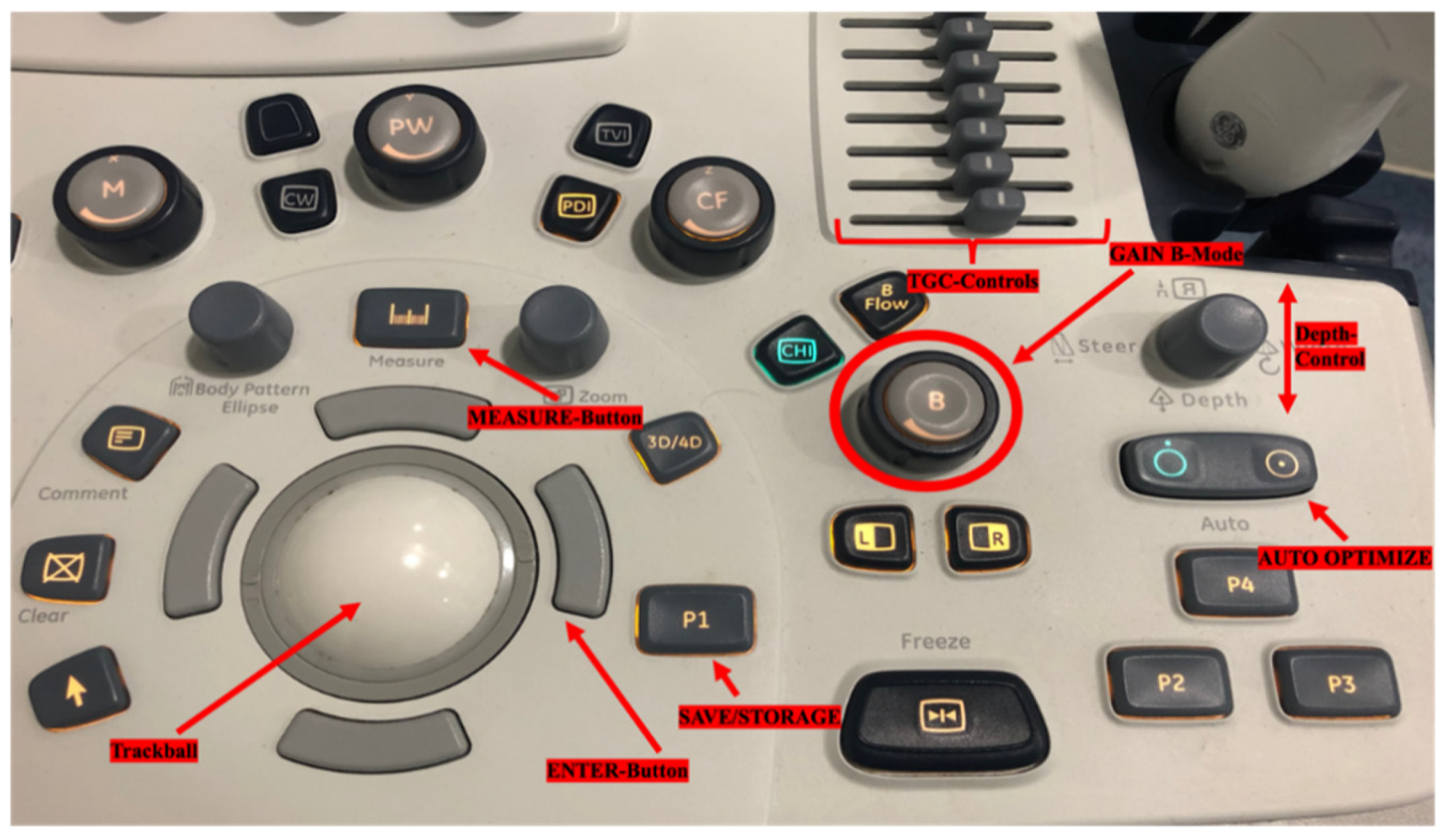
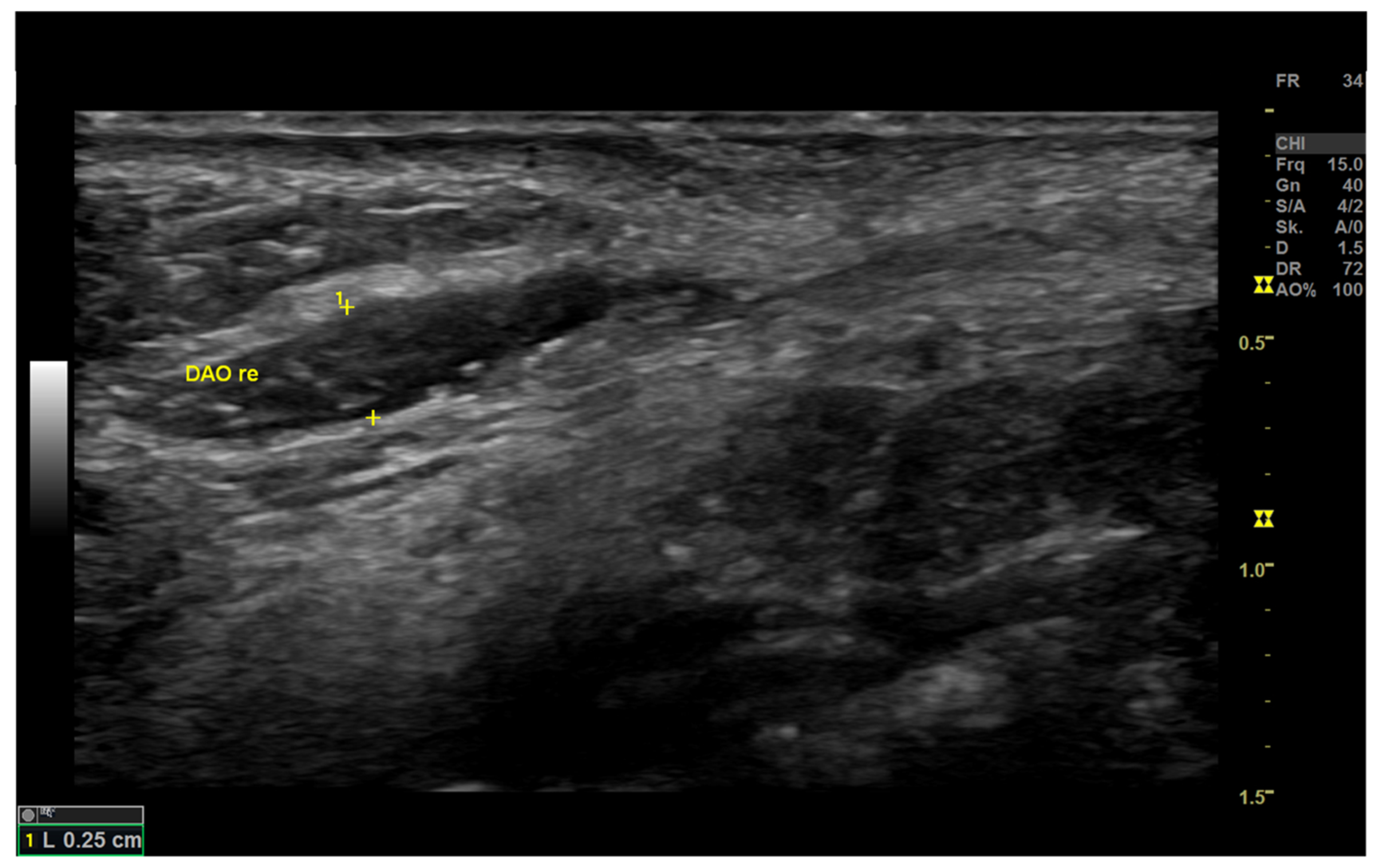

| Knobology for Facial Muscle Assessment with Ultrasound (US) | |||
|---|---|---|---|
| Group A | Pre-exam buttons | On Display | Patient data button, Probe selection button (usually different linear and convex probes selectable), On-screen buttons for different program presets |
| Knobs to classify ultrasound findings for saved pictures |  | Text editing button | |
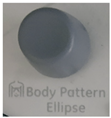 | Body pattern ellipse | ||
| Group B | Adjusting Contrast, Frequency, and Focus |  | Time Gain Control (TGC) switches |
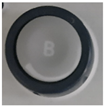 | Gain of B-Mode picture | ||
 | Automated Setting Optimization | ||
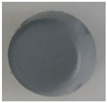 | Focus, Frequency | ||
| Basic knobs, switches, and buttons |  | Trackball and Enter-Button | |
 | Depth | ||
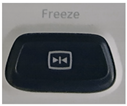 | Freeze | ||
 | Save Button (fixed images and cine loops, individually programmable) | ||
| Group C | 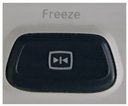 | Freeze | |
| Buttons for measurements | 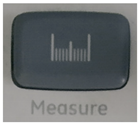 | Distance Measurement | |
 | Trackball, Enter | ||
| Facial Muscle Morphology in Ultrasound (US) Examination | |
| B-mode (B) | |
| Probe selection | linear (optimal 15–18 MHz) |
| Frequency (Frq) | 15 MHz |
| Gain (Gn) | 25–35 db |
| Depth (D) | 1–1.5 cm |
| Focus (F) | 0.5 cm |
Publisher’s Note: MDPI stays neutral with regard to jurisdictional claims in published maps and institutional affiliations. |
© 2022 by the authors. Licensee MDPI, Basel, Switzerland. This article is an open access article distributed under the terms and conditions of the Creative Commons Attribution (CC BY) license (https://creativecommons.org/licenses/by/4.0/).
Share and Cite
Kehrer, A.; Ruewe, M.; Platz Batista da Silva, N.; Lonic, D.; Heidekrueger, P.I.; Knoedler, S.; Jung, E.M.; Prantl, L.; Knoedler, L. Using High-Resolution Ultrasound to Assess Post-Facial Paralysis Synkinesis—Machine Settings and Technical Aspects for Facial Surgeons. Diagnostics 2022, 12, 1650. https://doi.org/10.3390/diagnostics12071650
Kehrer A, Ruewe M, Platz Batista da Silva N, Lonic D, Heidekrueger PI, Knoedler S, Jung EM, Prantl L, Knoedler L. Using High-Resolution Ultrasound to Assess Post-Facial Paralysis Synkinesis—Machine Settings and Technical Aspects for Facial Surgeons. Diagnostics. 2022; 12(7):1650. https://doi.org/10.3390/diagnostics12071650
Chicago/Turabian StyleKehrer, Andreas, Marc Ruewe, Natascha Platz Batista da Silva, Daniel Lonic, Paul Immanuel Heidekrueger, Samuel Knoedler, Ernst Michael Jung, Lukas Prantl, and Leonard Knoedler. 2022. "Using High-Resolution Ultrasound to Assess Post-Facial Paralysis Synkinesis—Machine Settings and Technical Aspects for Facial Surgeons" Diagnostics 12, no. 7: 1650. https://doi.org/10.3390/diagnostics12071650
APA StyleKehrer, A., Ruewe, M., Platz Batista da Silva, N., Lonic, D., Heidekrueger, P. I., Knoedler, S., Jung, E. M., Prantl, L., & Knoedler, L. (2022). Using High-Resolution Ultrasound to Assess Post-Facial Paralysis Synkinesis—Machine Settings and Technical Aspects for Facial Surgeons. Diagnostics, 12(7), 1650. https://doi.org/10.3390/diagnostics12071650







